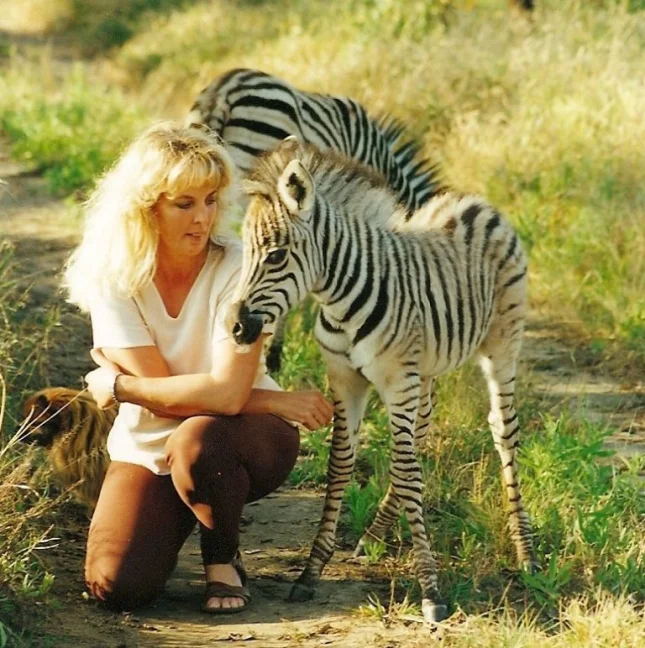
“There’s a zebra in my head. She’s been there for nearly two decades, galloping through my memories with the kind of stubborn grace only a zebra can possess. Her name was Kwakkies. And she changed my life forever”
Louise Joubert
Founder of SanWild
The Story of the SanWild Logo Zebra
Diaries of the late Louise Joubert (written by Louise)
I will never forget the day she arrived in the back of a game capture truck still covered in the dried blood of her mother. The young foal lay dead still, her little head hanging down. When I got up inside the game capture truck she did not even bother to look up, but when I gently lifted her to her feet to check for any visible injuries she turned around in a split second and bit me on the side of my hip. The seemingly dead foal had turned into a kicking and biting “little demon” and she did not intend to allow me close to her. She stood in the one corner of the truck shivering with exhaustion and I had to fight back my tears.
At the time, I was still working for a game capture unit. Our team had captured the young foal and her mother the previous day and they were to be relocated to another private game farm about 80 kilometers away. Unfortunately, the herd had become extremely stressed as result of the truck driver having to drive off the road to avoid a collision with another vehicle. Although he managed to avoid a crash, the zebras in the back of the truck had panicked and some had been injured. The falling bodies of the adult zebra had instantly crushed two other foals, but Kwakkies (as I named her) survived. Unfortunately, her mother could not be calmed down and continued jumping inside the truck until she eventually crushed her skull against the roof and died.
Out of a group of 18 zebras captured only 11 survived, amongst them the young unweaned foal. The remaining 11 zebras were off loaded at their new destination, but the young foal was returned to the capture unit, as the farmer did not want an unweaned animal.
While sitting on my haunches inside the capture truck where I could still smell the urine and fresh blood I knew in my heart that what we were doing to wild animals was so wrong. I was convinced that I could feel and even smell the animals fear and I pictured the broken legs and dying animals inside the truck. I hated the moment and can relive my feelings as if it only happened yesterday, but while I looked at this young petrified animal, I realized that I needed to change my life! I simply could not continue to do this job any longer. The suffering became too much and I had an overwhelming feeling that I had to do something to help, not just this young zebra, but also the many other animals like her that had fallen victim to South Africa’s growing wildlife industry.
Eventually the foal lay down again and I got off the truck to get a light tranquilizer and prepare her for transportation back to my house. We arrived home exhausted at 03h00 the next morning. I tried to give her some milk, but she refused and frankly, I was too exhausted to be bothered and to fight her to take milk. I went to fetch a blanket and lay down on the grass inside the temporary pen where I very quickly fell asleep.
Maria, my housekeeper, woke me shortly after 07h00 and I felt the foal lying close to my body. I had not noticed her lying down next to me during the night. Her small head was down on the grass and she was sleeping deeply. When I moved, she jumped up and stood in the corner of the small outside room shaking from head to toe. After a quick cup of coffee, I warmed her milk and returned to the outside room. After a short struggle with the foal between my legs, I managed to get the teat into her mouth and when the warm milk started trickling down her throat she gave up and started suckling desperately. While drinking, her body shook and then stopped for a short while before she started shaking again. I realized she was in shock and that the terrible last 48 hours had affected her in a bad way.
She took 2 litres of milk and then lay down exhausted and slept for the next five hours without moving. I knew I was in trouble, this foal had stolen my heart and without a doubt I would have walked across a desert for her at the time, and would like her own mother, fight any predator (man or animal) that wanted to harm her. I was in love; it is a simple as that. Little did I know how this young animal was going to change my entire life forever.
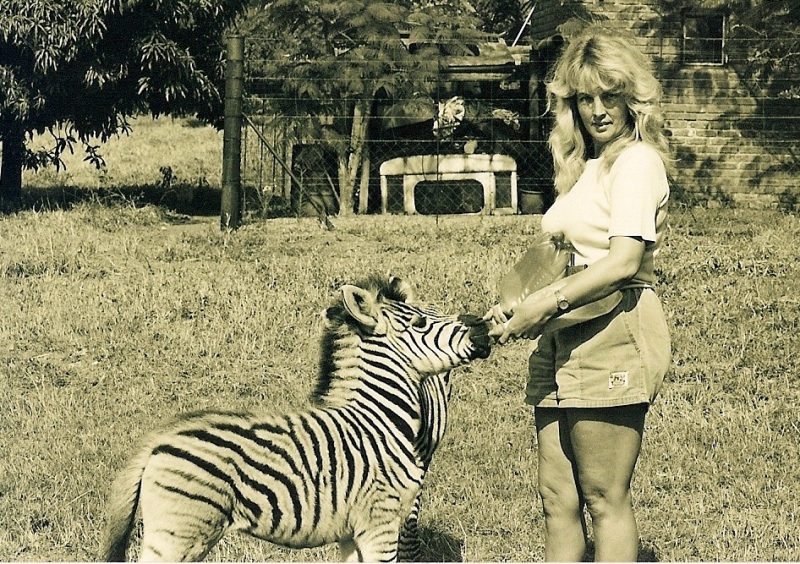
Kwakkies was now almost four months old and she had taken over my entire household. Early in the mornings, she would wait for Maria (my housekeeper) to arrive at the gate, as Maria had become her constant companion in addition to Peanut’s a yellow mongrel dog that closely resembles a dingo.
Peanuts and Kwakkies spent many hours doing predator/prey training where the dog would chase her around my house and in return, the young zebra would turn on its heels and chase the dog in return. Although she seemed happy with this game most of the time, she also needed the comfort of a mother and whenever she started tiring, she would walk into my office that had a door directly onto a large garden, and would lie down at my feet preferably under my desk. As she got bigger, this habit proved to become more and more difficult.
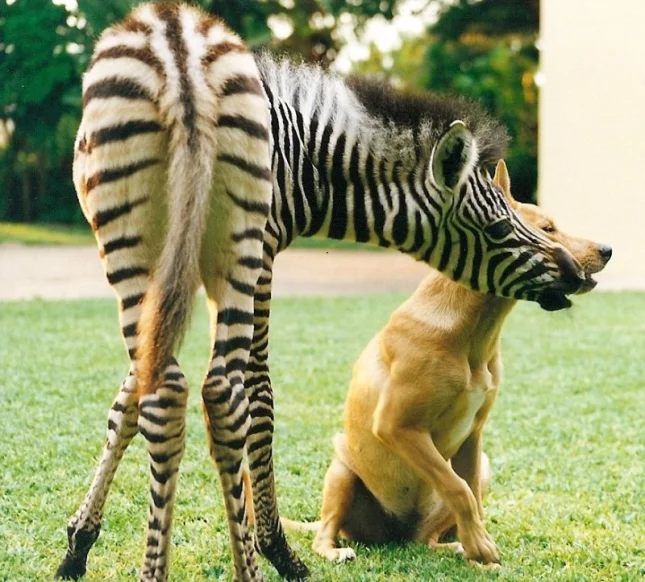
As her mother, I got the respect I deserved, but poor Maria, not much taller than the young zebra had a hard time. As she stretched onto her toes to hang our washing, Kwakkies would grab hold of a sheet or shirt and without warning pull it off the clothing line and would then run off with the clothing items dragging behind her. Her next best game was to stand at an open window and wait for the curtain to blow closer which she would then take in her mouth and start chewing. Most of our curtains were left with large holes and I gave up trying to persuade her to give up this habit. The clear and shrill laughter of Maria chasing after the zebra foal to get back her washing will remain with me always and so will the memory of a dear old lady who fondly looked after many of our animals without complaining a single day about the mess they made or the damage they caused. Maria truly loved all of them; especially the zebra foals.
In between raising this young zebra, I also had a job to do and from time to time, I had to return to the capture site to continue marketing the animals, which the game capture unit had removed off overstocked private game farms. By this time, I had taken to flying in the helicopter and at every possible opportunity I would take to the skies with a game capture pilot, and good friend, who at the time was flying a Hughes 300 helicopter that was used for capture operations. Sitting in the co-pilot seat it was very interesting to observe the different ways wild animals reacted in a capture situation. Zebra herds for example has a dominant stallion and dominant mare and the moment the animals are herded to a capture boma the dominant mare would head up the group and run in front while the dominant stallion protected the rear end of the group. When the animals reached a point where they felt insecure, they would group up and the dominant stallion would run up to the front from where the dominant mare would be calling for his help. From above, one could see her mouth moving. This was the time to pull back with the helicopter and allow the animals to regain their confidence. If the pilot chose to continue driving the animals at this point, the entire herd would split and would run into different directions, wasting a lot of time to regroup the animals. Once the dominant stallion gave the signal the herd would continue running in the formation setup initially and could normally be herded into a capture boma without major problems.
It was late in the afternoon on a flight back to the farmhouse, on the farm our company was capturing, that we spotted a herd of zebra on the neighbouring farm, close to the perimeter fence acting quite strangely and we decided to check it out. As we approached the animals took off and started running away from us, but a very small foal stayed behind hopelessly caught in an old cattle fence. From the air the young foal seemed totally exhausted and us flying over with the helicopter certainly did not help the situation either and as we crossed over her, I saw her collapse on the fence with her back leg still entangled. We flew straight to the landing spot and I called for assistance on our air to ground control.
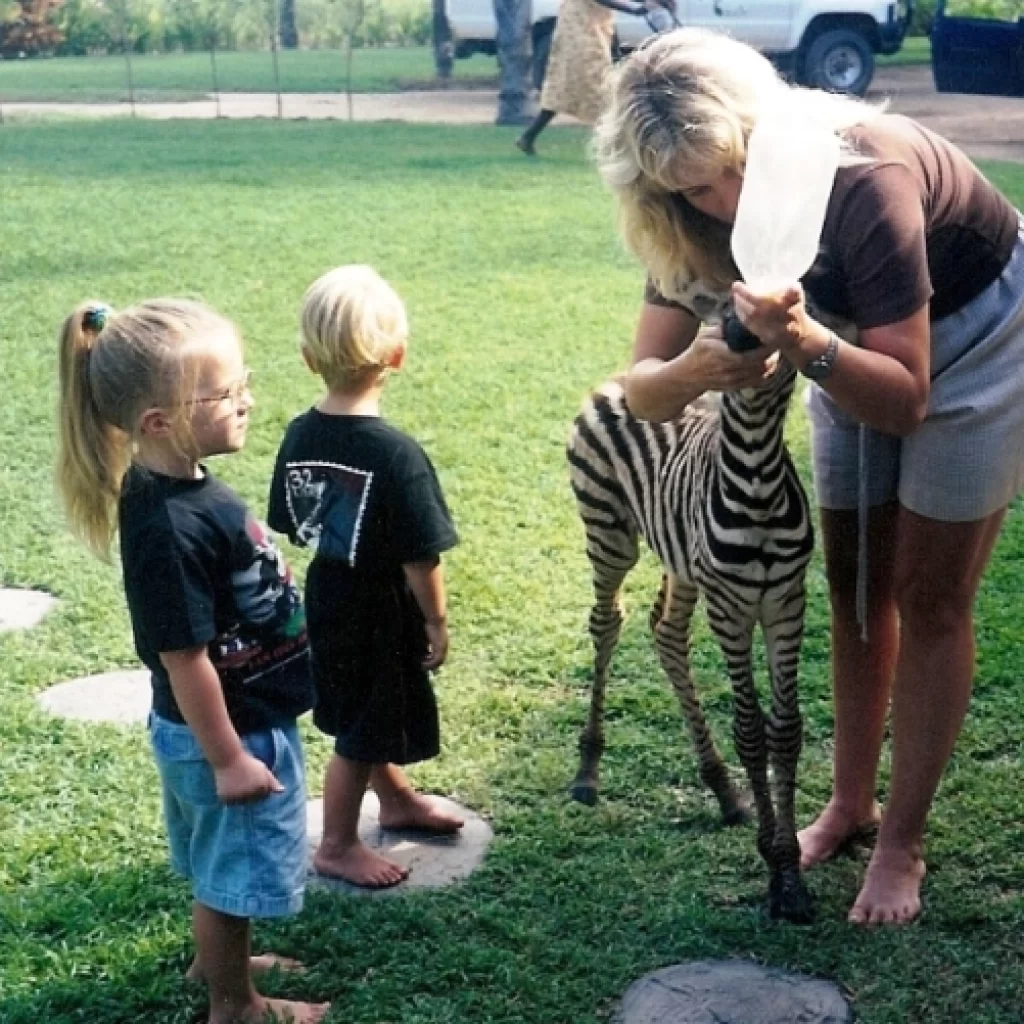
The farmer informed us that his neighbour was not living on this particular farm, but that an African farm manager would meet us at the gate. It did not take us too long to find the young foal as we took a GPS reading in the helicopter when we flew over her. We stopped a short distance away and started walking slowly towards the young foal. This was the first time that I had heard the pitiful calls of a baby zebra calling for its mother while in distress. In the distance, I could hear her mother returning her baby’s calls, but we could not see the herd, but we would hear her mother’s calls all the time and knew they were not too far away.
When we reached her one of our guys placed a jacket around her head to cover her eyes and we started cutting away the wire that held her leg captive. By this time, she had cut herself badly with the barbed wire that was used for the old fence. One of her eyes had been badly damaged, possibly a kick from one of the zebras in her herd and the one back leg had been cut open onto the tendons. The signs around showed that the young foal has struggled for some time to free herself. The injuries needed expert veterinary treatment and I realized that this unfortunate baby would not be able to be released back with her mother.
She was very dehydrated and infection had already set into the wounds that were covered with blowfly eggs that would within hours hatch into maggots. Sadly, we had no choice, but I could not help wiping down my tears as we drove off away from her family and I knew that within minutes her mother would return to the place she knew her baby was left behind. For many hours, she would be running around calling desperately to find out where her foal was, not understanding what had happened to her.
On arrival at the farmhouse my worst fears were confirmed when we checked the young foal’s temperature – she was running a very high fever and needed antibiotics as quickly as possible. Fortunately, we carried basic veterinary supplies and could put her on an intravenous drip and give her the necessary medication. I also asked for a very small amount of tranquilizer to be given to at least allow her to sleep that night. Both of us settled down shortly – me in the one compartment of the game truck with the door slightly open between us, and she in the adjoining one. Whatever I did to try to get her to settle down failed; she would not lie down and was eventually so tired that she started falling over. I was extremely worried and her mother’s calls repeated inside my head and I eventually gave up and decided to sit down inside her compartment and try to read a book by holding my flashlight.
As I sat there trying to read, my eyes continued to close and eventually I felt that I would fall asleep any moment. By this time, the young foal had walked up quite close and she was now standing with her head hanging touching my shoulder. From the corner of my eye, I could see her legs slowly drooping and I put my arms forward and held her while she went down. Within a second, she was completely down lying with her head on my knee fast asleep. It must have been almost 30 minutes before she jumped up in panic, and stepped all over me while running to her own corner. The the entire drill started all over again.For many days afterwards, I was still covered in bruises.
By the next morning, I was totally exhausted, but the foal had finally lain down on her side and she was sleeping like a ghost in a coffin. For three days the game truck compartment was her home and she was given her bottle and veterinary treatment every couple of hours. During this time, I did not even have the time to think about Kwakkie’s reaction when another foal would arrive, but as we drove home on the fourth day, I could hardly contain my excitement!
Maria was first to greet me, running to open the gate and smiling broadly showing off the gaps in her teeth. Her bare feet (she refused to ever wear shoes) and toes covered in mud as she had run from the garden to greet us. My heart warmed to her again; how much I loved this down to earth lady; she was truly a blessing in my life!
Of course Kwakkies followed close behind Maria and eagerly nudged me on the butt while Joseph my gardener and I were untying the ropes holding the game capture relocation crate upright on my vehicle. As we were still busy off loading, Kwakkies called out and there was an immediate response from Gummies inside the crate. When she heard the calls of another zebra after so many weeks, Kwakkies could not contain her excitement and hardly gave me the chance to open the crate door to let Gummies out into a temporary holding pen. She pushed passed me forcefully and within seconds the two zebra foals were eyeing each other out. Gummies immediately walked up to Kwakkies and tried to suckle on her. This was most definitely not okay with Kwakkies and she kicked viciously. Fortunately the two of them settled down within an hour and as I unpacked could not persuade Kwakkies to leave the temporary holing camp, I let her be and went to get my clothes in the washing machine so that I could again look like a civilized person.
Within days the two foals had bonded and we could allow Gummies to roam freely inside the yard with Kwakkies. Both eagerly took their bottles from Maria and me.
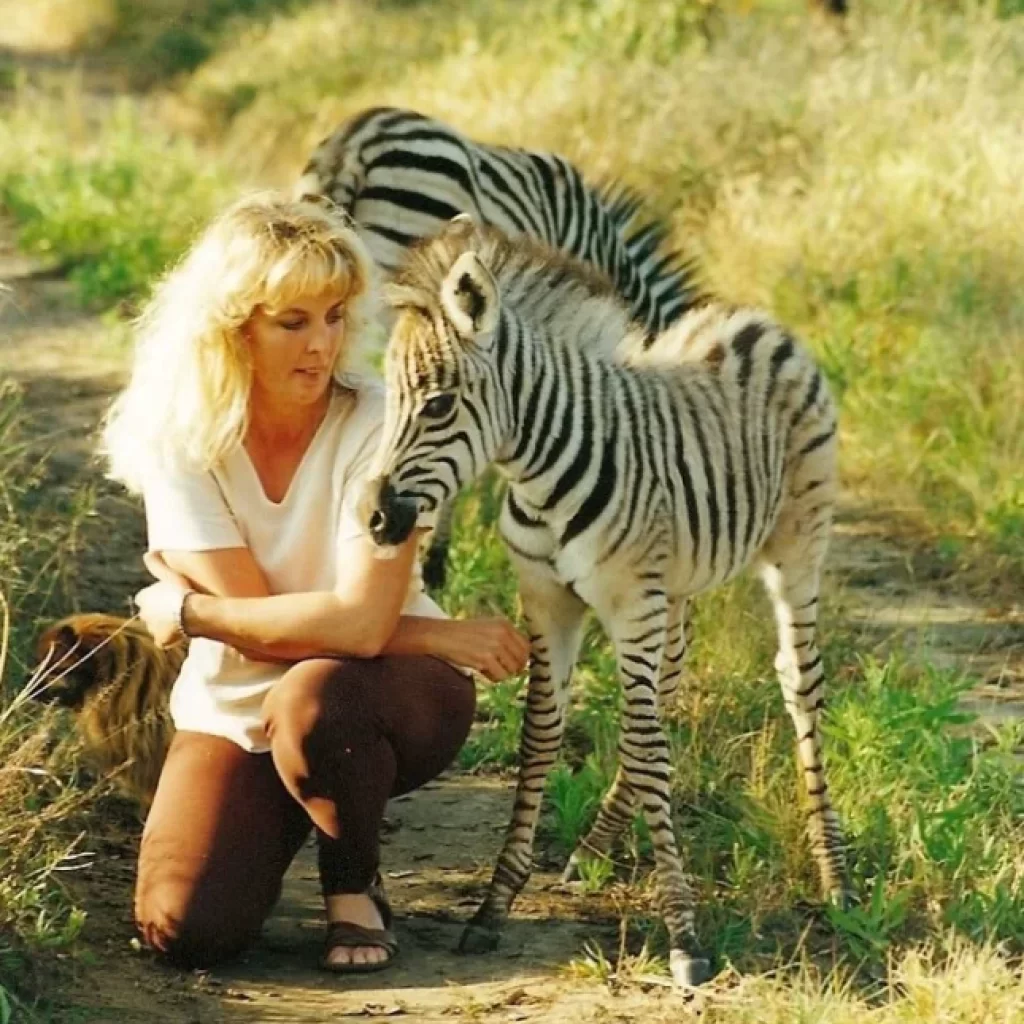
Over the next couple of months, the two zebra foals became part of my life forever and as the months passed and they grew bigger and bigger, I realised that soon I would have to let them go to a game farm where they would be able to join up with other wild zebras and hopefully be able to return to a life in the wild. I could hardly contain my tears whenever these thoughts crossed my mind and knew that I had to find another solution that would ensure that I would not have to let them go where I could not ensure their safety and welfare. However the small holding simply would not do.
Outside in my yard, there was also a number of other wild animals that were either being hand raised or were still receiving post-operative treatment after they needed operations to either set broken legs or wings and were still recovering from poisoning or after being hit by a motor vehicle. I realised that a permanent sanctuary was needed and also that there was a desperate need in our immediate area for a wild animal emergency rescue facility. However I simply did not earn enough money to make this dream a reality.
More and more I started dreaming about leaving my job and setting up a non-profit organisation to make my dream a reality to ensure the animals I loved so deeply a future.
A New Beginning
In the years that followed, those two zebra foals remained at the heart of my journey. Kwakkies became the face of SanWild—the zebra in our logo—symbolizing everything we stand for: compassion, freedom, and sanctuary.
Each time I look at that silhouette, I remember the foal covered in blood, biting me in fear, trembling in the back of a truck. I remember the silent nights we spent curled up together in makeshift pens. And I remember the day she finally ran free again—her spirit healed, her trust restored.
It’s impossible to explain exactly how one animal can change the course of your life. But for me, it started with a zebra. And she’ll remain with me, always—this wild, resilient, stubborn, beautiful zebra in my head.
Was I brave enough to take up such a challenge; only time would tell?
The name SanWild: a Sanctuary for Wildlife
The name SanWild is a blend of two powerful words: “San”, derived from Sanctuary, and “Wild“, from Wildlife. Together, they reflect the sanctuary’s core mission — to provide a safe haven for wild animals in need. SanWild is more than just a name; it embodies a deep commitment to the rescue, rehabilitation, and long-term protection of South Africa’s native wildlife. As a true sanctuary for wildlife, SanWild offers animals a second chance to live freely and safely in their natural habitat.
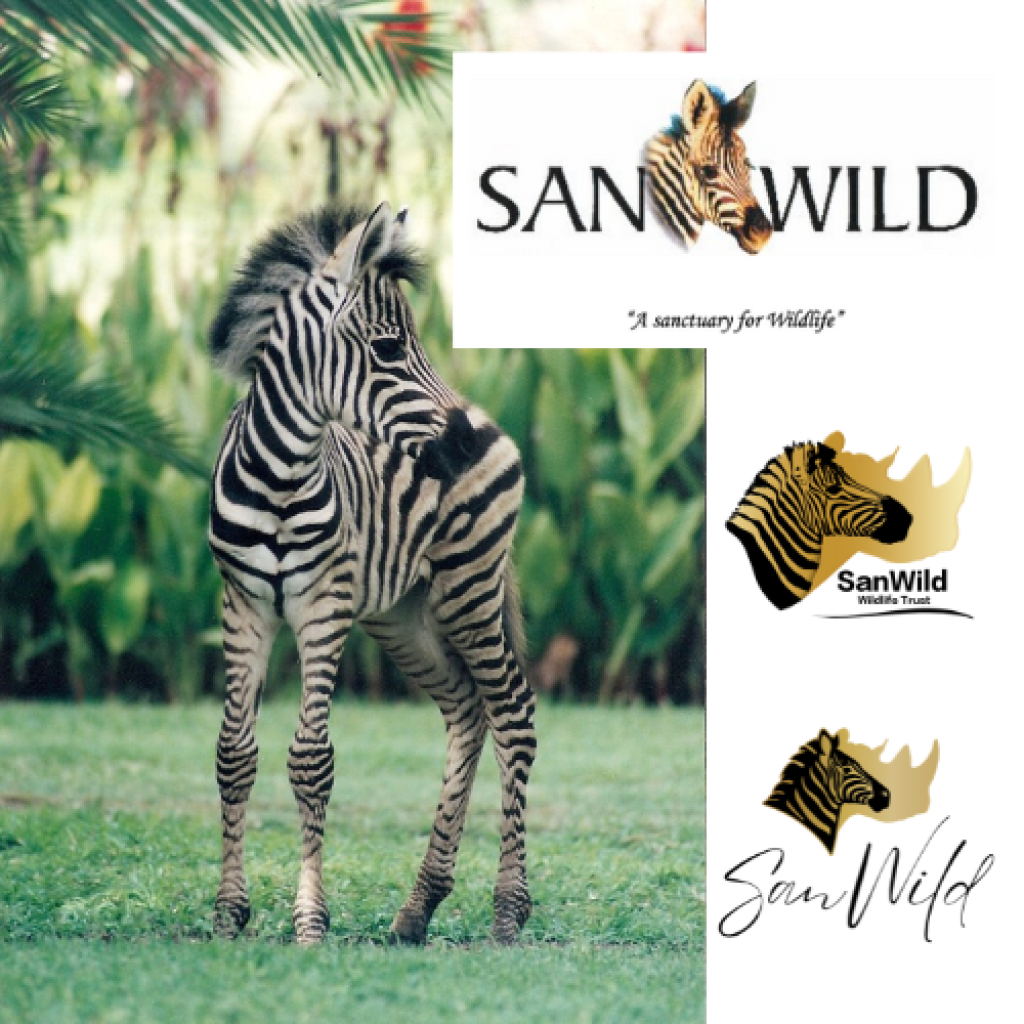
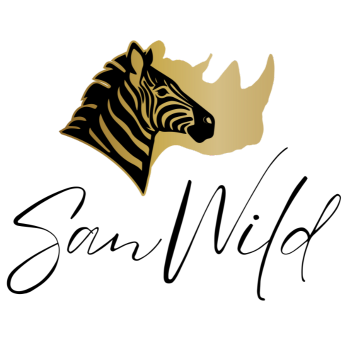
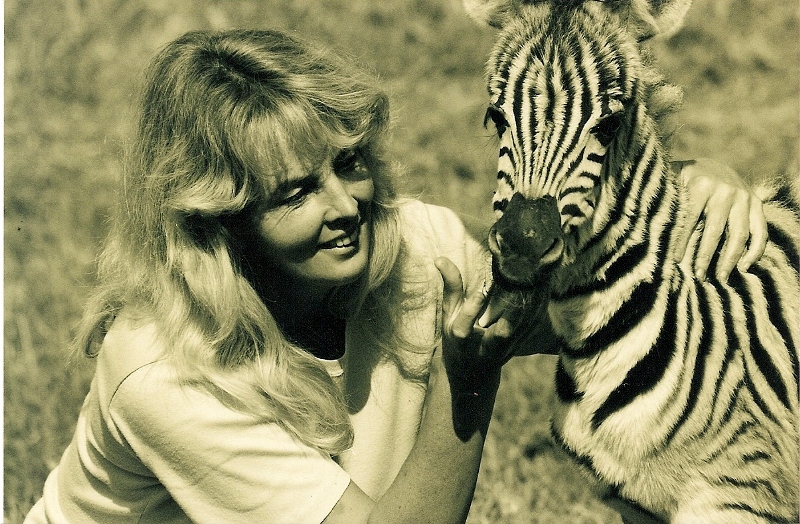
Leave a Reply